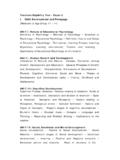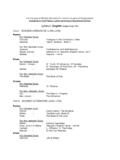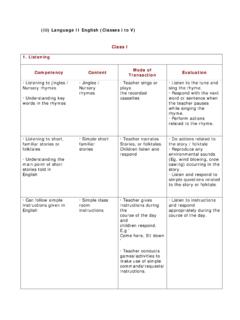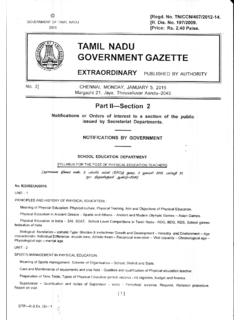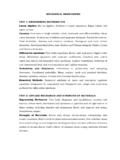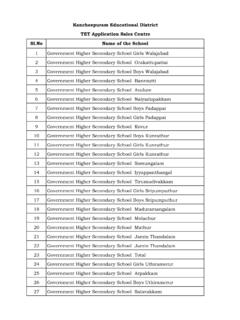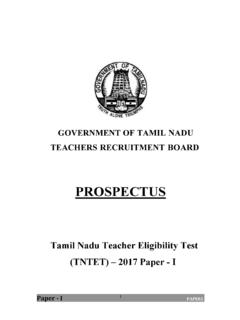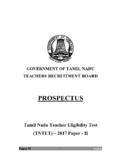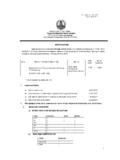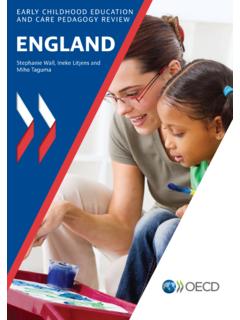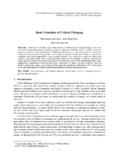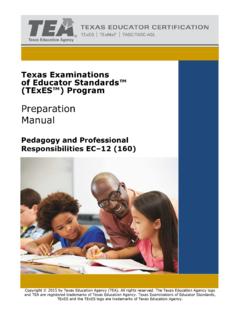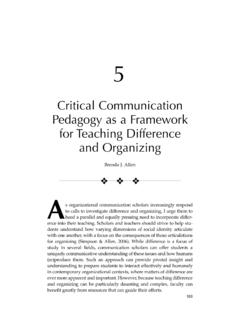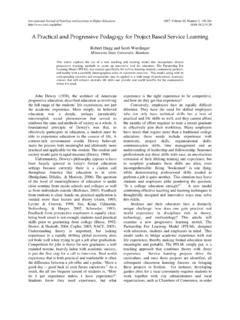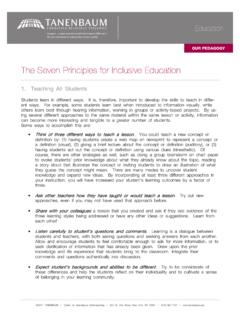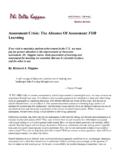Transcription of TET Paper 1 Child Development and Pedagogy - t n
1 Teachers Eligibility Test - Paper 1. (i) Child Development and Pedagogy (Relevant to Age Group 6 - 11). Part (A): Child Development Unit-I: The Children's Profile at the Beginning of Primary Education Physical and Cognitive. Trends in physical growth Hormonal influences on physical growth . Development of neurons Symbolic thinking and limits of logic Sensory motor stage-Pre operational stage-Language Development Influence of home environment, attitude of family members on cognitive Development of the Child -Identity status and psychological well being. Unit-II: The Children's Profile at the Beginning of Primary Education Social and Emotional. Self concept and Social Awareness Sibling relationships Peer relationship and play Self awareness Cultural influence on self-concept- corresponding stages of Erickson's Psycho-social Development Emotional Development in a Social context affection- sympathy-laughter-anger, sadness, fear-Parent- Child relationship-Emotional well being emotion and health.
2 Unit-III: Physical & Intellectual Development during Primary School Years (6 to 10 Years). Physical growth cycles-Body proportions-Muscles and fat-Capacity for attention and concentration-Selective attention-Memory strategies- processing speed and capacity-Thinking skills. Cognitive Development . Concrete operational stage-Piaget's tasks-concept of intelligence as a mental ability. Development of mental/intellectual abilities. Intelligence tests-Creativity in primary school Children. Unit-IV: Social and Emotional Development during Primary School Years (6 to 10 Years). Meaning of social Development -social expectations-Children's Friendships- factors in friendship and choices of companions social acceptance-the desire to belong-peer grouping-Effects of schooling on social, emotional, and cultural spheres-Pattern of emotional Development -common emotional patterns-the role of maturation and-learning in emotional Development how children develop likes and dislikes to subjects, teachers, school, other students-emotional balance impact of media on emotional Development .
3 Unit-V: Moral Development during Primary School Years (6 to 10. Years). Meaning of moral Development -factors in moral training of children- Honesty-Generosity-Children's heroes and ideals-Meaning of discipline- essentials of discipline-media and their influences on moral Development . Part (B): Learning. Unit-I: Learning. Dynamic internal process-connecting old knowledge to new information- language learning-acquiring learning habits-learning to adapt to diverse situations in life-Nature of learning-learning through interactions. Unit-II: Types, levels and approaches to Learning. Types of learning-Learning Hierarchy-signal learning stimulus-response learning-Motor and verbal chain learning-Multiple discriminations concept learning-Learning rules and problem-solving. Learning Levels from imprint to intuition- examples of learning at different levels.
4 Approaches- Behaviourist-cognitivist and constructivist. Unit-III: Concepts and constructs. Concepts and constructs-concept-formation-Use of materials activities, scheme pictures, real life experiences-construct mental representations of external reality-connecting ideas generated by students due to exposure to peers, media and community-concept mapping. Unit-IV: Factors Contributing to Learning. Personal psychological, social, emotional factors and school related factors, Learning style; teaching strategies; media; technology;. 1. Teaching Learning Process 2. Teacher's personality traits. Unit-V: Constructivist Approach to Learning. Learners construct knowledge for themselves-constructing meaning is learning-focus on the learner not on the lesson taught- Personal and social construction of meaning-Learning to Learn making meaning Learning, a social activity-ZPD.
5 Unit-VI: Learning and Knowledge Active learner-Nurturing learners' active and creative activities children's voices and experiences-integrating their experiences with School Knowledge-Right to learn-Physical and emotional security for learning. Conceptual Development -continous process-All children capable of learning-important aspects of learning-various ways of learning-Cognitive readiness for learning-Learning in and outside the school-knowledge and understanding-recreating knowledge-manifesto for learning.
